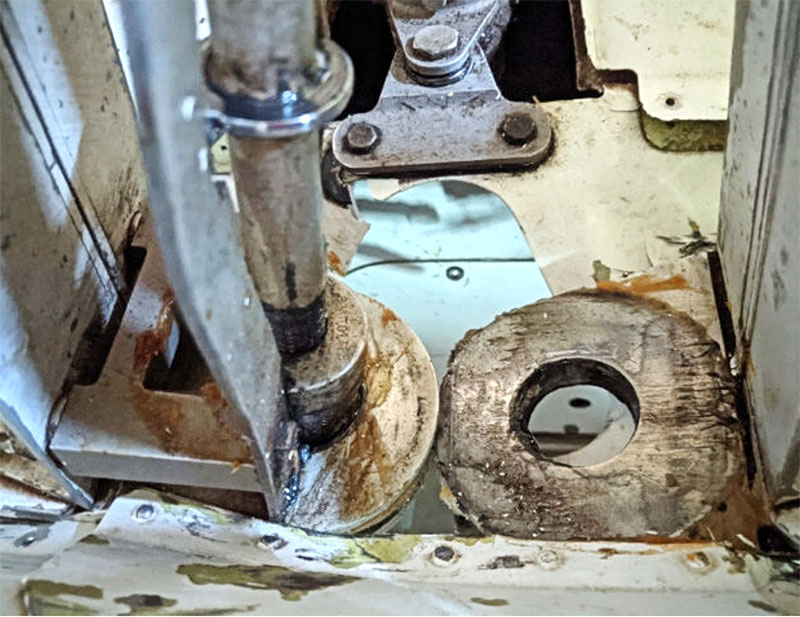
Too much force applied, and not performed in accordance with the manual.
By Phil Dodd
She’ll be right, mate! Just get a bigger hammer, that will make it fit. It’s never been a problem before. Don’t worry, it will be okay.
These are words of complacency. The online Cambridge Dictionary defines complacency as “a feeling of calm satisfaction with your own abilities or situation that prevents you from trying harder”.
Why do we have that feeling of calm satisfaction that prevents us from trying harder? We lie to ourselves.
Lie number one
“It worked this way before, so it will always work.” James Reason’s Swiss cheese model will beg to differ. At some point, the hole in the cheese slice that this creates will eventually line up with a set of other holes, and there will be in an incident or accident.
Lie number two
“The maintenance manual was written as a compliance document, not as a practical manual.” The maintenance manual was written by the engineers that designed the aircraft. We may have an Annual Inspector's approval, or a DI endorsement, but unless we have a CASR 21.M approval, we are just Annual Inspectors or DIs. Stick within your scope of practice with what you are allowed to do.
Lie number three
“If we hit it harder, it will go in.” Well, in fact, that may be be true, but at what cost? Driving pins harder than intended may split or deform the structure. Over torquing can over stress fasteners, which then fail when additional stressors are applied – additional stressors that would normally be okay. In a recent incident, applying extra force did not make the main pins go in – it damaged the mechanism and only the upper main pin was inserted while the lower main pin was completely disengaged
Lie number four
“I did it right the first time, so no need to check it.” “To err is human” (Alexander Pope, 1711). Nobody is perfect, and we all make errors. Although some errors just result in buying the wrong size shirt for our loved one, other errors can lead to fatalities. Double check, get a second pair of eyes to look over it. For some items, it is mandatory to get a second independent inspection done. That requirement is written in blood for many an aviator who thought one check was enough.
Lie number five
“That procedure is too long, takes too much time, and the extra steps are not needed.” The accident reports are filled with examples of when corners were cut, steps missed, costs cut or shortcuts were taken. If we think that a procedure is long winded or not necessary, talk to an Airworthiness Officer, and see if they agree. Most of the ways we do things use tried and tested methods, which work and are safe.
Lie number six
“We don’t have the time for that. Anyway, it has never been a problem before.” The 5 minutes we save here, will probably cost a day down the track, or someone’s life. This lie is sometimes linked to lie number 5. It is false economy. So what if the inspection takes an extra day? So what if the aircraft is not available for flight today while we wait for the correct part? Taking a little extra time could save time later on - or save a life.
When we first go solo or first get qualified with a DI endorsement, we are ultra-diligent and fully concentrate on the task at hand. But as time goes by, we tell ourselves lies. We get overconfident. We get a false sense of security that all is good, and we become complacent. That complacency then leads us to make an error.
When was the last time you got another Annual Inspector to do the Form 2 on your glider? A fresh set of eyes over your pride and joy could pick up something that you have missed. When was the last time you reviewed the maintenance manual? Is it up to date with the latest information? When was the last time you checked the ADs on the EASA website? Or do you just rely on ‘The System’ to let you know?
Don’t let yourself become complacent. Complacency kills.































